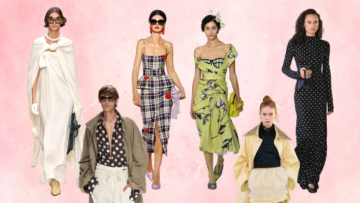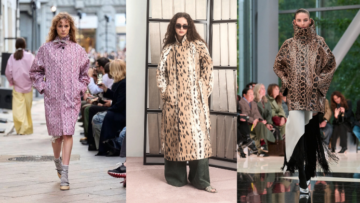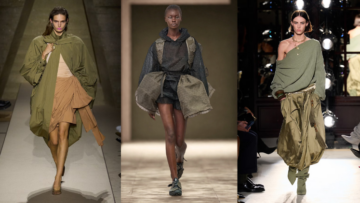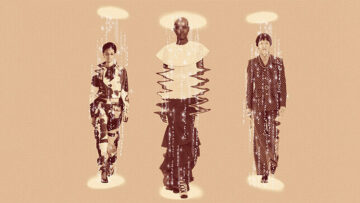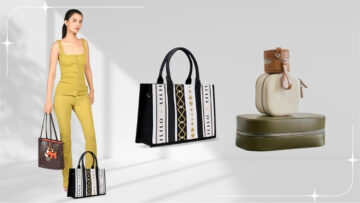Fewer returns, happier shoppers and simple goal of virtual try-ons! bigger profits— that’s the
Once seen as just a trend, the Virtual try-on (VTO) technology is now set to give a new makeover to online shopping. With 20.5 per cent of global fashion sales happening online, totalling over US $ 357 billion, more brands are realising that letting customers’ see how clothes look on them, without stepping into a store, can make a huge difference. This could also help reduce the hassle of returns!
Big brands are already seeing results. For instance, Cosmetics giant Avon reported a 320 per cent increase in conversions and a 33 per cent rise in average order value after using VTO technology.
With Millennials and Gen Z driving online shopping, the potential of virtual try-ons to make the experience interactive and immersive is immense.
One company helping to speed up the adoption of this technology is Dopplr, an AI-powered VTO platform for fashion brands. Last year, it secured US $ 750,000 in Series A funding, backed by Cornerstone Ventures and US-based BAT VC.
“The most important metric that a VTO impacts is the engagement rate which indicates whether or not shoppers are taking to the try-on experience. On an average, we see a 3.5X engagement on products offering the try-on experience. Across our clients, we have impacted conversions by about 27 per cent and reduced returns rate up to 37 per cent,” pointed out Sresht Agarwal, Co-founder, Dopplr.
He added, “Currently, we are live with five brands including Being Human, Superkicks while we are onboarding a few other brands. Brands appreciate how seamlessly Dopplr integrates with platforms like Instagram and WhatsApp, making shopping more interactive and fun.”
Sresht mentioned that the global market for virtual try-on solutions was valued at approximately US $ 9.17 billion in 2023 and is projected to reach US $ 46.42 billion by 2030, growing at a CAGR of 26.4 per cent. The virtual fitting room segment alone is expected to grow from US $ 5.71 billion in 2024 to US $ 25.11 billion by 2032.
In an off-the-cuff chat with Apparel Online, Sresht shares in detail how VTO is reshaping shopping experiences. Check the edited excerpts here.
AR: How’s the buzz around virtual try-ons been so far?
SA: The apparel industry has changed dramatically with e-commerce’s rise. Many big brands like Asos, Adidas and Nike are already using VTO (Virtual try-ons) solutions to improve customer engagement and satisfaction. Even social media platforms like Instagram and Snapchat are adding AR features, so people can virtually try on clothes directly from these platforms.
I think technology is really improving too. AI, computer vision and 3D modelling are boosting VTO accuracy. For example, Google’s AI-driven fitting tool shows customers how clothes will fit on different body shapes, which is pretty cool. Plus, being a data geek definitely helps!
India is quickly catching up in adopting VTO technology. It is one of the fastest-growing e-commerce markets which is set to reach US $ 111 billion by 2030 and that’s a huge opportunity for VTO tech to shine. With India’s diverse population, VTO plays a crucial role in addressing the variety of body types and skin tones, providing more accurate fit and visualisations to enhance the shopping experience.
Big names in Indian fashion e-commerce like Myntra, Ajio and Nykaa Fashion are already experimenting with AR and VR to create cool, immersive shopping experiences.
Another trend I’m noticing is that Indian brands are blending the physical and digital worlds, creating these cool ‘phygital’ experiences. So, you might see AR mirrors in stores where you can virtually try on clothes, or use VTO technology online to see how a product fits you before buying. This cross-channel engagement is really helping brands connect with customers in new ways.
While we don’t have all the exact numbers for India’s VTO market yet, it’s clear that India’s online fashion shopping is growing fast and VTO technology will grow with it.
AR: What are the key challenges slowing down the growth of VTO in India?
SA: One of the biggest challenges is the cost and accessibility of VTO technology. The initial investment can be pretty high for smaller businesses.
We address this issue by offering a low-cost trial, allowing brands to test the solution and assess its ROI before committing financially. This includes digitising a limited set of garments, allowing them to assess the ROI without overcommitting resources. Implementing the solution for a few base silhouettes over a couple of months helps us figure out the ROI for that business via A/B
tests. If the ROI on the table makes sense, we scale it up. For brands ready to commit to offering try-on experiences across their listed products, the platform supports a broad range of digital assets, ensuring smooth scaling as their digital collections grow.
Another challenge is building consumer trust. While people in major cities are embracing virtual try-on tools, shoppers in Tier-2 and Tier-3 cities are still a bit skeptical. They’re not always ready to fully rely on virtual tools for making decisions. So, clear communication and educating customers about how VTO works will go a long way in bridging that gap.
Also, in areas with limited internet connectivity or on lower-end devices, ensuring that VTO solutions work smoothly is a big challenge. Customers also sometimes take time to fully trust and understand virtual try-ons, so we’re focused on making the experience even more intuitive with clearer instructions and demos.
| The most important metric that a VTO impacts is the engagement rate which indicates whether or not shoppers are taking to the try-on experience. On an average, we see a 3.5X engagement on products offering the try-on experience. |
AR: Despite these hurdles, what excites you about the future of VTO?
SA: The future of VTO is super exciting, especially with younger, tech-savvy consumers who are embracing digital experiences more than ever.
On top of that, there’s a big sustainability push happening in India and VTO helps reduce returns and the associated logistics costs, which not only benefits the brands but also supports eco-friendly practices. For instance, globally around 20-30 per cent of online apparel purchases are returned because of fit or style issues. VTO will also help reduce bracketing practices.
Brands in various categories such as eyewear and makeup, are already leveraging virtual try-on solutions to enhance the shopping experience. For example, Lenskart and L’Oréal are advertising their virtual try-on tools to help shoppers visualise products before purchasing. This proves that if VTO experiences are engaging and informative, they will likely be embraced more widely, benefiting both consumers and brands.
That’s why, we’re launching independent size recommenders that use a brand’s historical data and garment construction details to provide more accurate sizing suggestions.
AR: You recently secured US $ 750,000 in funding. How do you plan to allocate this capital?
SA: How shoppers engage with and enjoy the experience is at the heart of everything we do. To that end, we will use this capital to continue developing our technology and improve on photorealism, user experience and UI which would determine how the shoppers engage with garments in a better way in the trial room environment.
With the encouraging feedback we are receiving from our clients and the interest expressed from a lot of lifestyle fashion brands, we would also be investing in improving our 3D asset production capabilities.


